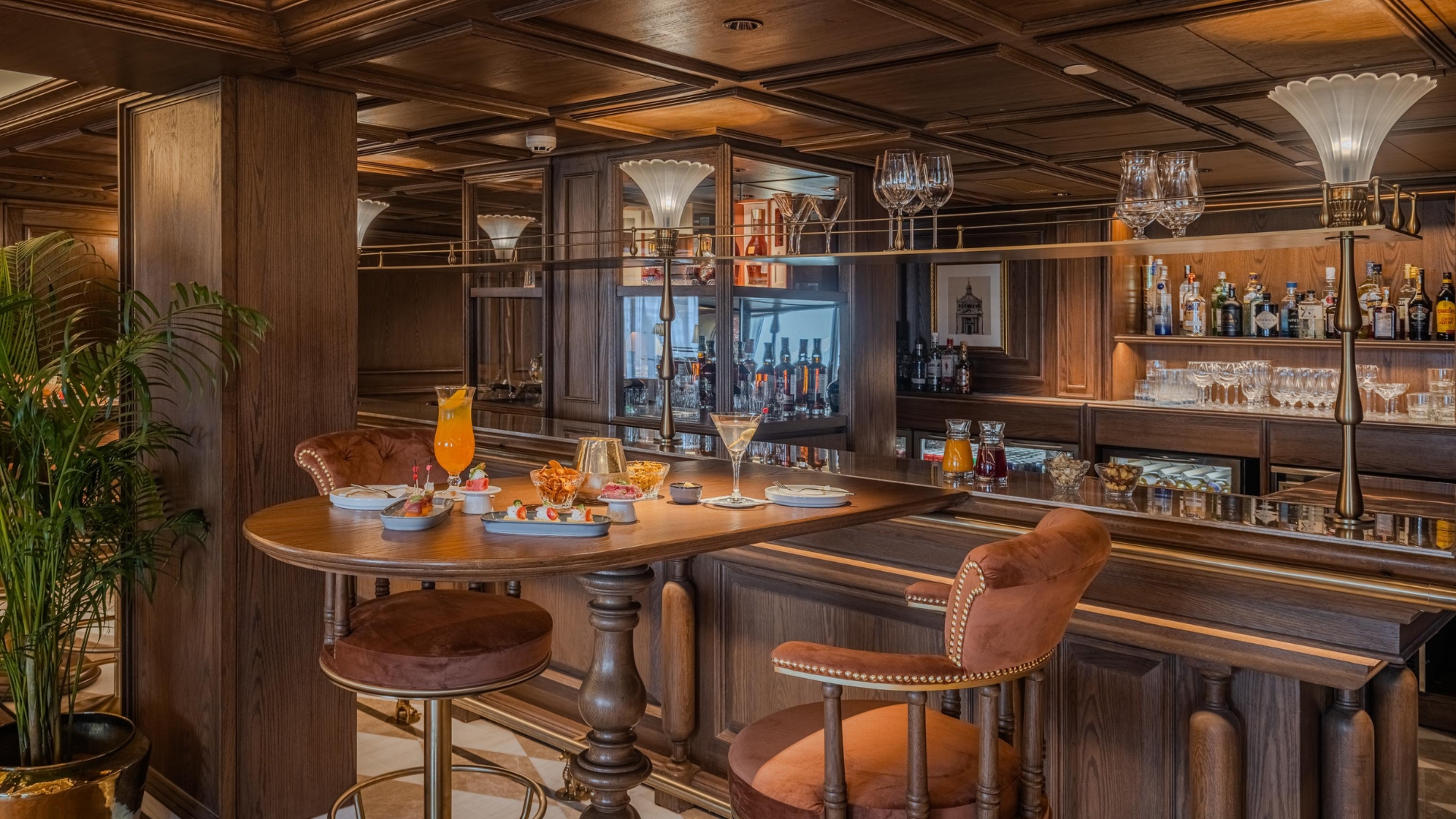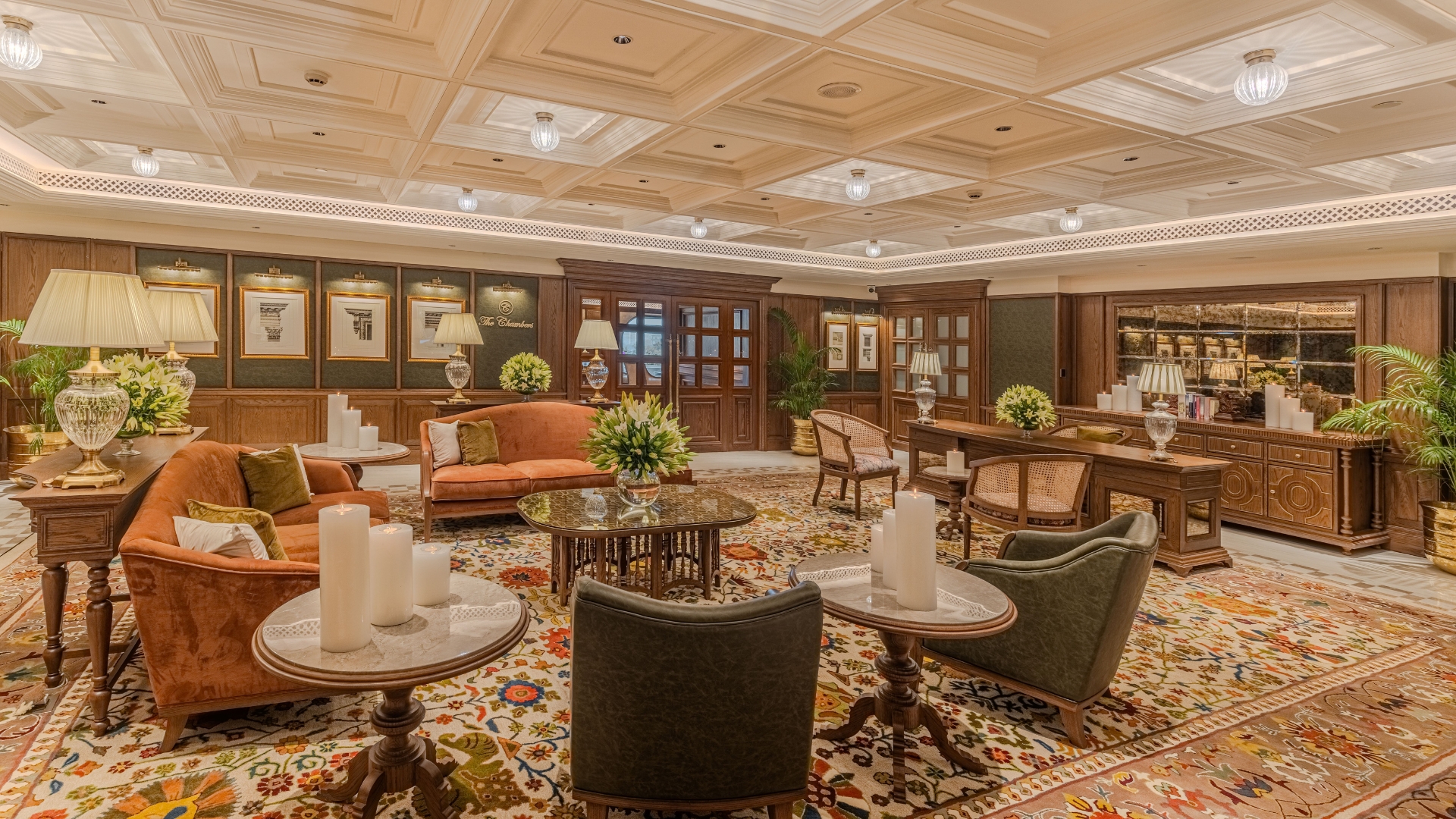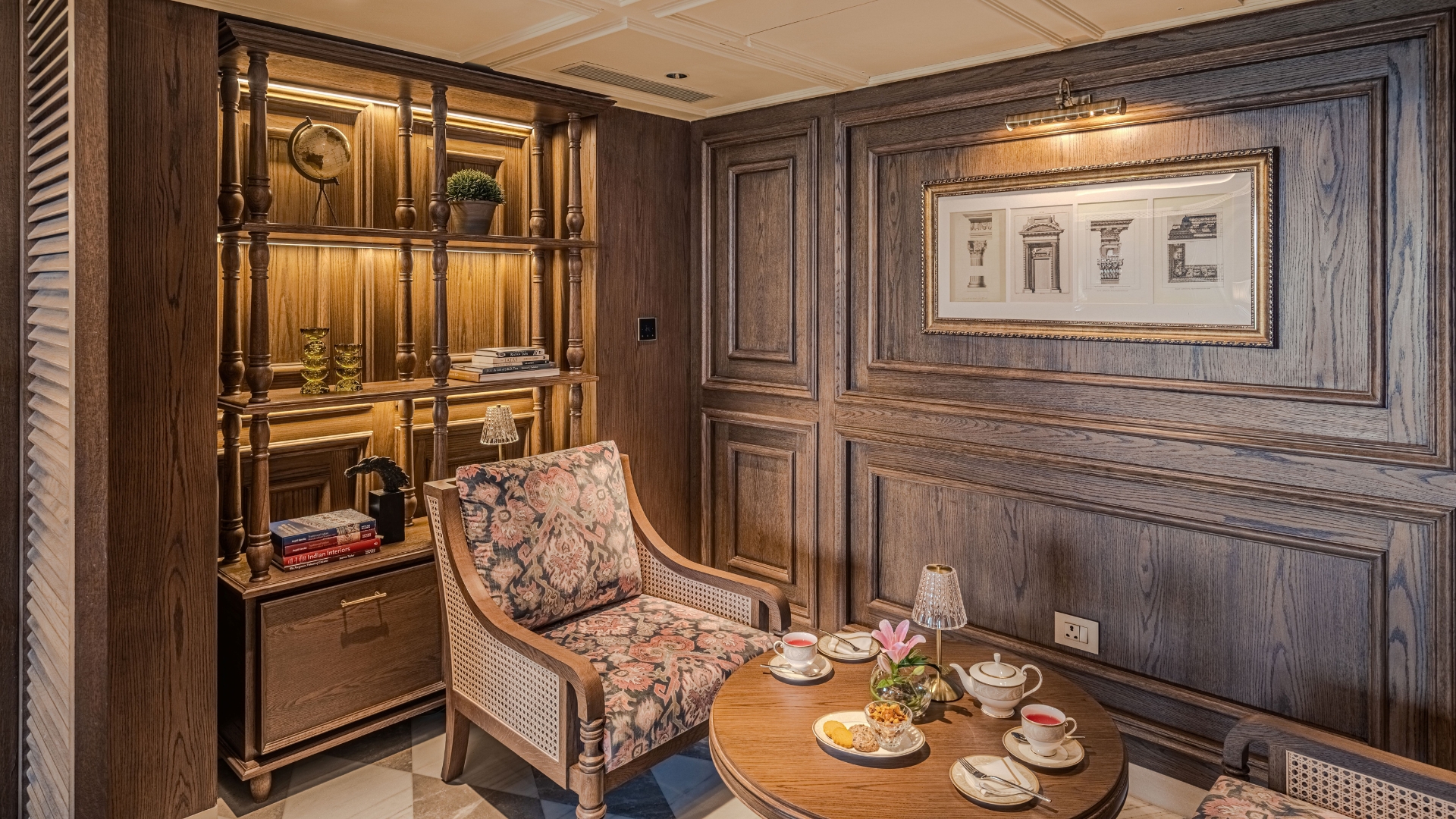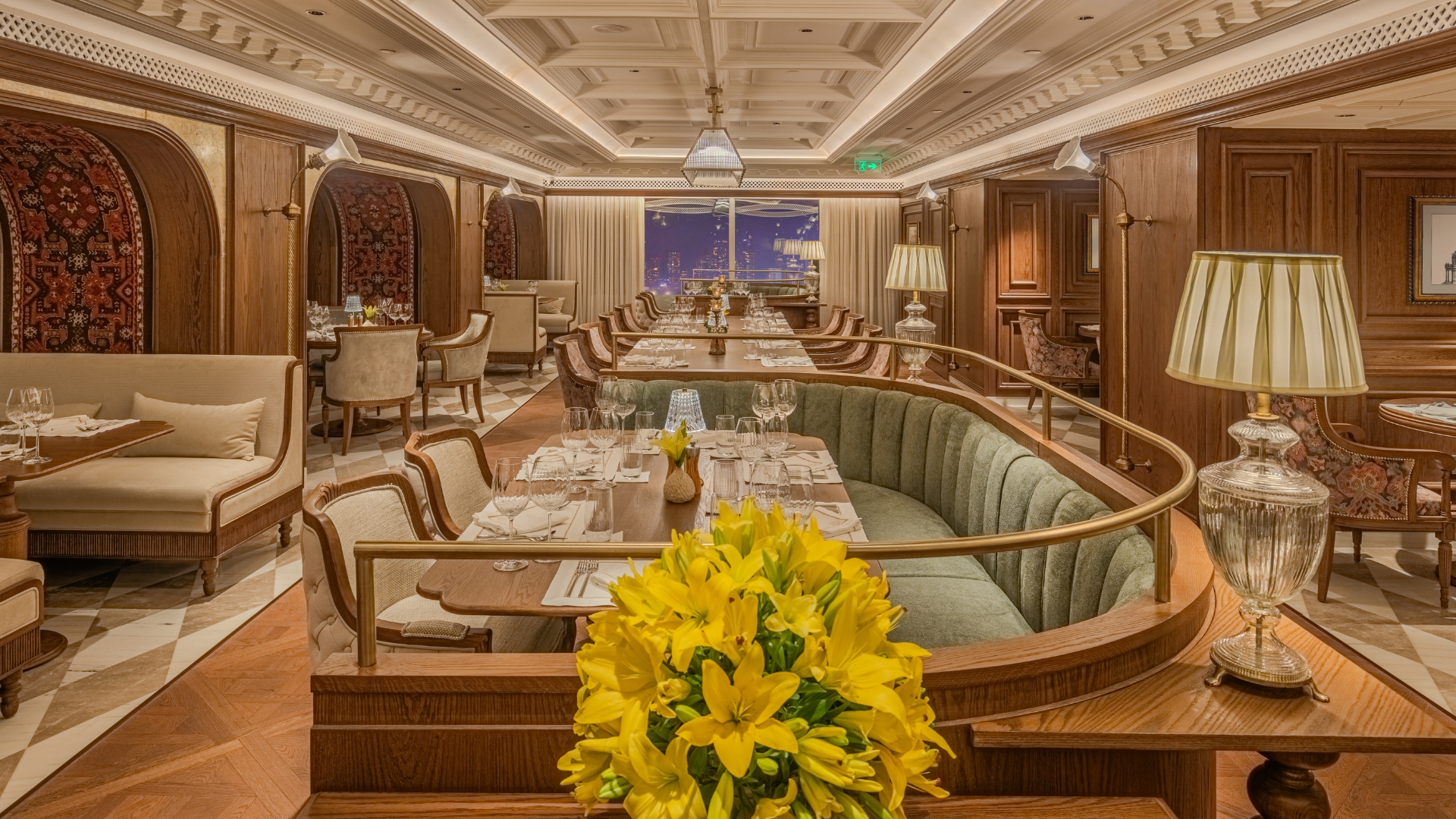The Art of Subtle Grandeur
Inspired by Bengal’s grand Rajbaris, the reimagined The Chambers, Taj Bengal blends the elegance of the past with a design language that is classic, nuanced, and timeless.
By Rupali Sebastian
When architect Bobby Mukherji took on the task of redesigning The Chambers at Taj Bengal, he wasn’t just revamping a space—he was bringing back a forgotten era, reinterpreting history in a way that felt both timeless and alive.
For the uninitiated, The Chambers is no ordinary club. Established in 1975 at The Taj Mahal Palace, Mumbai, it has long been the country’s most exclusive business club—an address that signals power, influence, and access. Over the years, its presence has expanded across Taj properties, offering private sanctuaries for industry leaders, diplomats, and global achievers. In Kolkata, however, The Chambers needed more than a refresh—it required a reawakening.

The bar, sheathed in wood, is a warm, intimate space.
A place for the present
“It had classic elements before, but it felt dated. Not timeless. We wanted to take it to the next level,” Mukherji says. “Now, there’s nothing left of the old Chambers. We stripped it down to its bare shell and started from scratch.”
The inspiration? The regal Rajbaris of Bengal—the grand mansions built by zamindars and influential traders, whose fortunes were made trading everything from tea to opium under British rule. “These were men who built big,” the architect explains. “Their homes weren’t just about wealth, they were about stature. You see it in the multifoil arches, the intricate jaalis, the grand staircases.” Mukherji wanted to bring that same sense of grandeur, but with restraint—not in an over-the-top, gilded way, but in a manner where luxury whispers, rather than shouts. Incidentally, this is the same aesthetic the architect is following for the rest of the hotel—which is also being updated under his creative vision.

The ceiling is kept understated, albeit detailed with mouldings and patterns.

The alcoved seating sees a whimsical touch through the carpeted undersides of the arches.
Designing a space that breathes
The new 8,000 sq.ft. Chambers enjoys an expanded footprint. “Earlier everything was micro: smaller rooms, less number of rooms, no proper bar,” reveals Mukherji. “Plus, it was too heavy on wood. We balanced it out.” Painted walls, wallpaper, plaster of Paris, mirror panelling, luxurious fabrics—each surface was chosen to feel fresh. The flooring, once a plain expanse of wood, now reveals intricate patterns—a detail that draws the eye the moment you notice it.
The limited height meant they kept the ceiling deliberately understated so as to not draw attention: subtle, white-on-white patterns, except in places where they wanted to carve out functionalities through a shift in ceiling materials—like the bar, which has a wooden expanse overhead.

The Chambers at Taj Bengal offers versatile seating for every requirement - like this cosy corner against rich, wood panelling perfect for a quiet tete-a-tete or focussed work.

Where the story unfolds
The entry to The Chambers, marked by a glass door, is through the reception area, part of the lift lobby of the hotel, with its scattering of seating. Inside, a lounge acts as the heart of the space where everything converges. Turn right, and you enter the dining area, a setting for sit-down lunches, high-powered dinners, and quiet negotiations. Walk left, and a corridor leads you to a series of private meeting rooms—each space crafted for intimate discussions, small gatherings, or full-fledged board meetings in a room that seats twenty.
The bar is the soul of The Chambers, shifting in mood with the rhythm of the day. Mornings are bright, with sunlight streaming in. Evenings are moody, with warm lampshades casting a soft glow, reflecting off Bengal-inspired artwork. The cognacs and single malts gleam against the bar’s rich, dark wood backdrop, waiting for conversations that stretch long past their first pour. The cigar room, with its dedicated humidor and custom exhaust system, is a quiet nod to the indulgences of a bygone era.
Seating was reconfigured to offer layered flexibility. “We wanted to create permutations and combinations that could work for both privacy and interaction,” he says. Alcoves were carved out between columns, and arched seating introduced with carpeted undersides—an unexpected, almost whimsical touch that softens the formality of the space.
The space abounds in thoughtful details. In the light fixtures, polished brass rods end in a frosted-glass bloom and in the bar stool, a tiny metal dragon holds up the footrest. “This was a labour of love,” Mukherji states.

Architect Bobby Mukherji.
A timeless statement
More than just a refurbishment, this was a balancing act—between past and present, grandeur and subtlety, nostalgia and reinvention. “The colonial British story began in Calcutta,” Mukherji says. “We had to acknowledge that history, but we also had to make it relevant today.”
It has been received exactly as intended. Unlike other Chambers properties, which lean towards contemporary influences, this one remains true to its classic roots. Rich wood, warm lighting, fabrics that feel as good as they look—every detail considered, every element intentional. And it all came together in just four months. “We didn’t have the luxury of time,” Mukherji says. “The hotel was operational, we couldn’t block out The Chambers for too long. But we had the right team and that made all the difference.”
Today, The Chambers at Taj Bengal isn’t just a space—it’s a story well told. A place where history finds a new voice, and where every detail is a quiet nod to the past, reinterpreted for those who will shape the future.


























